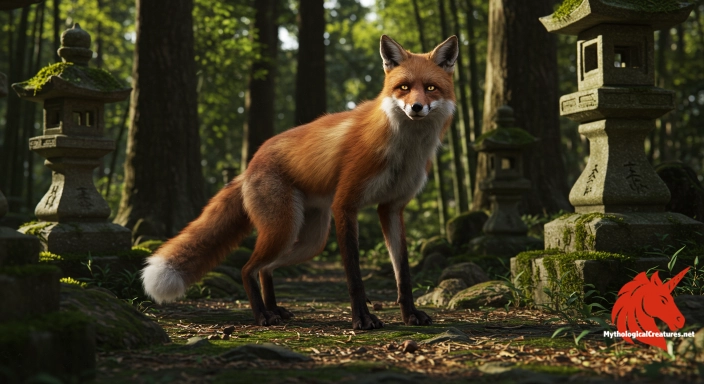Daphne: In Greek mythology, Daphne is a naiad renowned for her beauty and her tragic escape from Apollo’s unwanted pursuit, culminating in her transformation into a laurel tree.

Daphne
Daphne - Her transformation into a laurel tree has had lasting cultural impact, symbolising chastity, resistance, and the sanctity of nature.
Origins & First Encounters
Daphne emerges in the rich tapestry of Greek mythology as a revered naiad whose very name evokes the sanctity of the laurel tree. Born of freshwater deities and nurtured by the gentle murmur of springs and brooks, she has long symbolised the unbridled beauty and untamed spirit of nature. Her narrative, a compelling blend of divine allure and mortal resistance, highlights the tension between celestial desire and earthly autonomy. In early literary sources, her story is interwoven with themes of transformation and bittersweet escape, marking her as both a victim and a heroine. The myth, first crystallised in classical texts and later echoed in vivid artistic renditions, provides insight into ancient views on beauty, purity, and the power of nature. Creative retellings reveal the layers of meaning embedded in her metamorphosis into a laurel tree, a transformation that ensured her physical escape while immortalising her essence. Daphne’s tale not only illuminates divine-human interactions but also resonates with modern audiences through its exploration of agency and resistance. The enduring allure of her narrative lies in its ability to evoke reflections on the interplay between desire and self-preservation. Her legend continues to inspire cultural and artistic expressions, ensuring that both her beauty and her defiance remain timeless. In every retelling, Daphne stands as a beacon of nature’s resilience in the face of overwhelming divine might.
Source Texts & Tale Variants
The rich narrative of Daphne has been transmitted through a variety of ancient literary and artistic mediums, ensuring her story remains a cornerstone of classical myth. Ovid’s rendition in the Metamorphoses stands out as the definitive account, colouring later representations and interpretations with its vivid detail. Other classical authors and poets provided supplementary references that enriched the tapestry of her myth, often aligning her character with the sacred properties of water and nature. While Ovid’s version is celebrated for its emotional intensity and dramatic transformation, various poetic fragments and vase paintings reveal alternative nuances in her portrayal. These sources occasionally emphasise her filial relationship with river gods, lending her myth a more profound connection to the natural world. Some narratives explore minor variances, such as her role in local cult practices and the differing degrees of her resistance to divine pursuit. In parallel, medieval texts and Renaissance reinterpretations added layers of allegory and symbolism that shifted the focus toward the moral dimensions of her tale. The multiplicity of sources testifies to the enduring power of Daphne’s story, ensuring that each retelling invites fresh interpretations and insights. Overall, the evolution of her myth across diverse texts highlights the dynamic dialogue between written tradition and cultural memory.
Form & Powers
Artistic depictions of Daphne frequently capture her as an embodiment of ethereal beauty and natural grace. Typically, she is represented with flowing, radiant hair that cascades around her delicate features, mirroring the gentle streams of her nascent identity as a naiad. Her visage, often rendered with a soft luminance, reflects both innocence and a quiet defiance against the encroaching power of divine pursuit. Classical art frequently shows her in a state of elegant, fluid motion, as if every line of her form harmonises with the rustle of the surrounding foliage. The portrayals accentuate her slender, graceful figure—a physical symbol of both vulnerability and resilience. Rendered with a naturalistic approach, her figure sometimes appears draped in minimal, diaphanous garments that echo the transient nature of water and light. These visual depictions also capture the imminent metamorphosis that defines her destiny, with elements like scattered leaves or emerging branches hinting at her fate. Variations in size and form across artistic records suggest an adaptability in her representation, tailored to different aesthetic and symbolic milieus. Each detailed illustration stands as a testament to the timeless interplay of beauty and transformation that characterises her myth.
Regional Faces
Across the varied landscapes of the ancient world, Daphne’s myth experienced local adaptations that reinforced the link between her and the natural environment. In regions such as Thessaly, where crystalline streams and verdant groves abounded, her identity as a water nymph was amplified to reflect the immediate surroundings. Local cults celebrated her transformation with rituals that celebrated both the life-giving and regenerative aspects of water and flora. In certain communities, the story of Daphne was interwoven with regional traditions that highlighted her lineage as a daughter of a river god, thereby deepening her connection to sacred geographic features. Byzantine illustrations and later European folklore sometimes modernised her tale, infusing it with nuanced moral and spiritual lessons that reflected local values. Even within the Greek mainland, subtle variations in her portrayal underscored regional perceptions of nature and its divine underpinnings. Some locales emphasised her tragic defiance and relentless purity, while others focused on the benevolent symbolism of the laurel tree that emerged from her transformation. Celebratory festivals and local art frequently reimagined her myth to align with indigenous environmental themes and seasonal cycles. Such adaptations allowed her story to serve as a cultural mirror, reflecting diverse attitudes towards nature, power, and beauty. Collectively, these regional variations enriched the myth, ensuring its relevancy across distinct cultural and geographical contexts.
Cultural Parallels
Daphne’s narrative occupies a distinctive place among myths of transformation and resistance, resonating with global tales that use metamorphosis as a transformative escape. Like the story of Arethusa, whose flight from an unwanted pursuit led to her becoming a fountain, Daphne’s tale similarly melds the themes of evasion and eternal natural beauty. These myths, while differing in particulars, share a common motif of seeking refuge in the embrace of nature to preserve one’s purity and autonomy. Comparisons can also be drawn with legends from other cultures where figures transform into plants or animals to elude overpowering forces, thus symbolising ethical strength and transcendence. In the broader context of world mythology, such stories reflect a recurring human fascination with nature’s capacity to both protect and transform. Daphne’s link to the laurel, with its associations of victory and honour, finds parallels in other cultural symbols—for instance, the olive branch in classical Athens or the rose in various Eastern traditions. These cross-cultural parallels underscore a shared reverence for the natural world and its power to encapsulate human virtues. By examining these interwoven narratives, one observes how cultural boundaries blur in the expression of common themes such as resistance, sacrifice, and the eternal cycle of renewal. Ultimately, the comparative analysis of Daphne’s myth reinforces its universal appeal as both a personal and a symbolic journey.
Legacy & Modern Evolution
The legacy of Daphne’s myth has evolved gracefully over the centuries, influencing art, literature, and cultural symbolism from antiquity to the modern era. Early artistic representations evoked both the tragedy and transformative beauty of her story, serving as a robust visual metaphor in classical sculpture and painting. During the Renaissance, her tale was revisited with renewed vigour, inspiring artists and poets who saw in her narrative a reflection of natural purity and individual defiance. The enduring tradition of crafting laurel wreaths—an homage to her transformation—seeped into the fabric of modern accolades, from academic honours to athletic awards, thereby cementing her influence in contemporary symbolism. Modern interpretations have re-examined her story through lenses of personal autonomy and resistance, with critics and scholars alike finding fresh meanings in her metamorphosis. Daphne has transformed from a mythological figure to an emblem of the intersection between human desire and the resilience of nature. Her narrative continues to surface in literature, theatre, and even modern visual arts, where it serves as a reminder of the transformative power inherent in both nature and the human spirit. The evolving portrayals of her myth underscore enduring cultural themes of beauty, loss, and renewal, resonating with audiences across time. As modernity redefines the boundaries of myth and reality, Daphne remains a poignant symbol—a living metaphor for the eternal dialogue between passion and preservation, art and nature.
Interesting Fact
Daphne’s transformation into the laurel tree not only established the botanical symbol of victory and wisdom but also influenced the modern concept of the 'laureate', an honor bestowed upon outstanding poets and scholars.
Quick Creature Info
Origin:
Features:
Associations:
Our Mythic Legendary Rating:

Habitat:
Supernatural Powers:
Physical Attributes:
Abilities:
Behavior:
Lore:
References
Discover Another Mythical Legend You May Not Have Heard Of?
Uncover the mysteries of ancient folklore and expand your knowledge of legendary beings from cultures around the world.
Dare to Meet the Hito-gitsune....
Mythical Disclaimer: The images and data on this site are derived from various historical and literary sources, but we have found that many myths often have multiple versions and interpretations across references, sometimes contradictory. As a result, these creature depictions are artistic interpretations—imaginative blends of folklore, legend, and a dash of AI guesswork. Because creature descriptions vary widely, our illustrations and accompanying information represent our best effort to honor mythology while bridging creative gaps. Enjoy these interpretations—just remember, we've done our best to respect the stories and validate available data, but in the realm of mythology, details often shift, imagination leads the way, and nothing is ever set in stone!
Curated by the Mythological Creatures Team (rev. May 2025)
